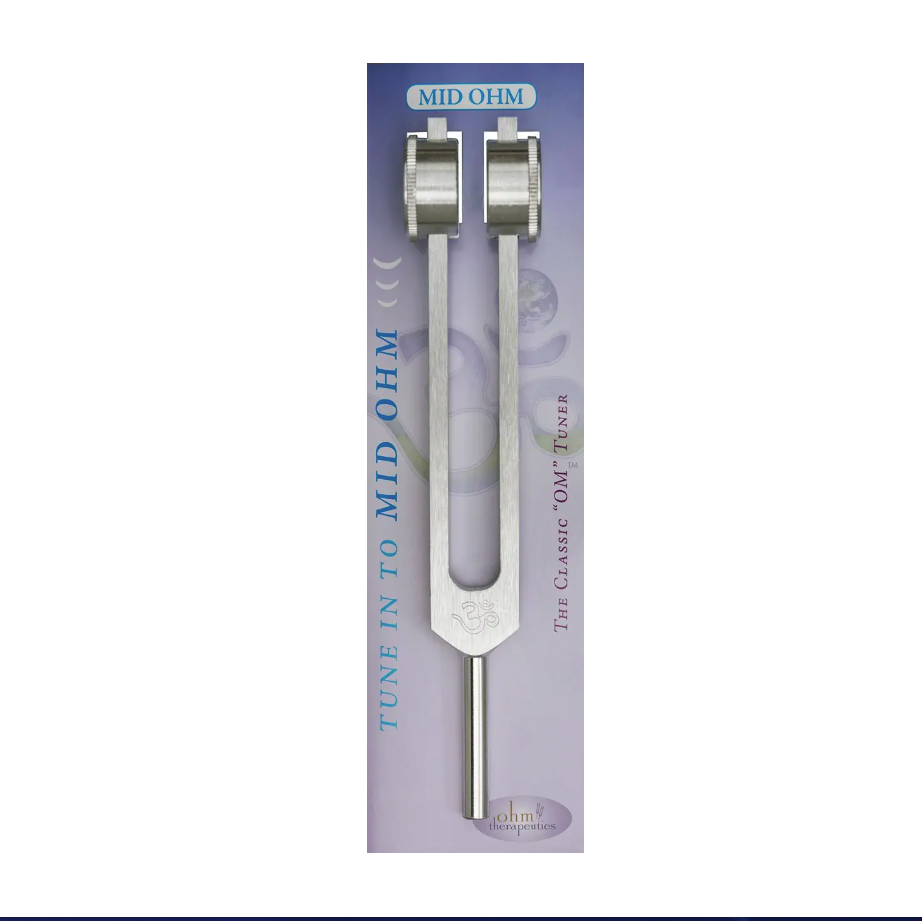LOW FREQUENCY, WEIGHTED TUNING FORKS: WHY THEY WORK DEEPER
Weighted tuning forks in the lower frequency ranges—especially are commonly used directly on the body to support relaxation, tissue release, and improved circulation. Their effectiveness is rooted in basic physical principles involving vibration, wavelength, and mechanical conduction.
PHYSICS OF DEPTH AND FREQUENCY
Lower frequencies generate longer wavelengths. In the human body, longer wavelengths propagate farther before dissipating, allowing them to travel deeper into dense tissues. Higher frequencies dissipate more quickly, making their effects more localized and superficial. This is the same physical relationship that causes bass tones in music to travel through walls while higher tones do not.
Mechanical vibration is also conducted efficiently through bone and connective tissue. When a weighted tuning fork’s stem makes contact with the body, its vibration couples directly into structures below the skin. Lower frequencies lose less energy as they move through tissue, allowing them to affect deeper fascial layers, joint spaces, and underlying musculature.
COMPARING OTTO to OHM - OTTO series 128, 64, 32 hz are based on bone resonance. OHM 136.1, 68.05, 34 hz are based on the Earth frequency pulse and also tend to be very grounding. It is personal preference, if you already have either the 136.1hz or 128hz fork you would want to choose the appropriate lower octaves.
32 or 34 Hz: Slow, resonant, and deeply penetrating. Often used around joints and areas with longstanding muscular tension or stagnation. Its longer wavelength can influence deep connective tissues.
64 or 68.05 Hz: Moderately deep, with a balance of reach and clarity. Useful for tendon and ligament tension, joint discomfort, and slower-moving fascial patterns.
128 or 136.1 Hz: Higher relative to 32 Hz and 64 Hz, offering more superficial muscular support. Frequently used for relaxation, easing muscle tension, and stimulating the nervous system through body contact.
Together, these frequencies form a practical spectrum for supporting tissues from superficial musculature down into deeper connective structures.
BIOFIELD VS. CONTACT APPLICATION
Weighted forks are designed for direct contact rather than biofield work. Their weighted ends increase amplitude and sustain vibration, making mechanical transfer into the body both stable and efficient. Because of this, they are well suited to session work that focuses on fascia, joints, and structural tension.
*biofield is the area around the body, unweighted forks are most suited for use to access auditory input or influence the nervous system.
SUMMARY
Lower-frequency, weighted tuning forks reach deeper tissues because of their longer wavelengths and efficient conduction through dense structures. By selecting between these 3 octave ranges, practitioners can target different depths and physiological responses, allowing for a versatile and effective approach to vibration-based support.
Download “LOW FREQUENCY, WEIGHTED TUNING FORKS: WHY THEY WORK DEEPER”



